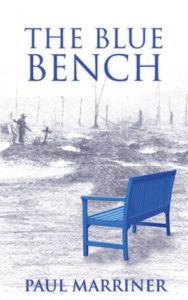
ShortBookandScribes #GuestPost by Paul Marriner, Author of The Blue Bench – ‘Striving for Accuracy and Finding Inspiration’ + fabulous #giveaway
It’s time for Paul Marriner’s third and final guest post about The Blue Bench, his novel set in 1920 during the aftermath of the First World War. Today sees the centenary of the interment of The Unknown Warrior in Westminster Abbey, a hugely influential cultural event which is also a focal point for The Blue Bench. You can read the first post in this series of three posts here and the second here.
There’s also the continuing giveaway which you will find further down this post. You can win signed copies of the book, puzzles, mugs and mousemats. The giveaway closes on 14th November so please do enter now and make sure you don’t miss out.
Paul has been my guest on Short Book and Scribes on two previous occasions before this latest series of posts. You can find Paul’s previous guest post about target readers here and some audio extracts to whet your appetite here.

Margate 1920. The Great War is over but Britain mourns and its spirit is not yet mended.
Edward and William have returned from the front as changed men. Together they have survived grotesque horrors and remain haunted by memories of comrades who did not come home. The summer season in Margate is a chance for them to rebuild their lives and reconcile the past.
Evelyn and Catherine are young women ready to live life to the full. Their independence has been hard won and, with little knowledge of the cost of their freedom, they are ready to face new challenges side by side.
Can they define their own future and open their hearts to the prospect of finding love? Will the summer of 1920 be a turning point for these new friends? As the body of the Unknown Warrior is returned, can the nation find a way forward?

Striving for Accuracy and Finding Inspiration by Paul Marriner
Hi, and thanks to Nicola for having me back here. Wednesday 11 November 2020 sees the centenary of the unveiling of the Cenotaph in Whitehall and the interment of The Unknown Warrior in Westminster. Some of you will know from my previous posts or from reading The Blue Bench how important these events, back in 1920, are to the story. In many ways I think they represented a turning point in our history. If you find a spare five minutes you might like to check out Youtube where you can find footage of the actual events. It’s a moving and affecting record of event and the impact on the nation. While writing The Blue Bench I found footage such as this to be a great resource as I strove for accuracy but, much more than being informative, I found it inspirational.
Here’s that Youtube link.
It was important that The Blue Bench be as accurate as possible when referring to events, locations, fashions, music and social mores, so, before writing I spent months reading contemporary and historical novels, checking out youtube for old footage, reviewing academic papers and finding old newspapers. But perhaps most useful was the photographic record and I thought you might like to see some of the pictures I found and used for both accuracy and, again, inspiration.
Fashion: Rather than spend too much time on describing what characters are wearing in one go I try to drip feed details over a number of scenes. But the details need to be right and I found adverts from magazines and newspapers most useful. Here are a couple of examples.
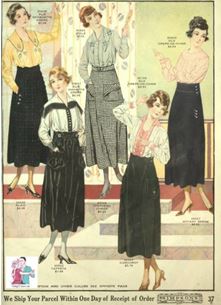
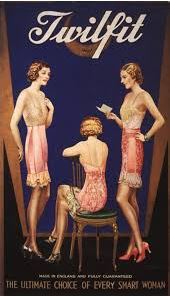
The challenge was then to make sure that the attire and accessories matched the protagonists’ characters, social standing and finances. As you might imagine, this is more challenging when it comes to women than men, especially when referring to underwear, hence the advert above.
The main protagonists: I like to have a very clear idea of what my main protagonists look like for a few reasons. Firstly, I’m bringing them to life so of course I need to know what they look like. Secondly, I need to be consistent in my descriptions which means being sure of basic things like eye and hair colour/style, height, build. Thirdly, and most importantly, if the protagonists’ physical appearance is to be used as part of their identity/character then I need it clearly in my mind. For example, a character might have a lopsided grin or perhaps a sneer that is used to convey mood and emotion.
For The Blue Bench I especially wanted a clear idea of the appearance of the two main female characters and below are some pictures that helped me. I should stress that these are not exactly how I see those characters but starting points.
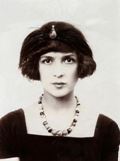
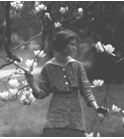
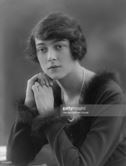
Although I rarely provide fully detailed descriptions of my characters in the book, my intention is to give important and sufficient details so that the reader can imagine their own version.
Locations: Most locations in the book are real and many are still there so it was doubly important to use them accurately. Fortunately the photographic record for Margate is excellent and the available images fascinating. Here are a few I found most helpful.
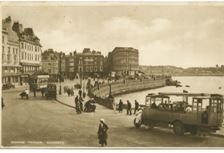
Margate Sea Front
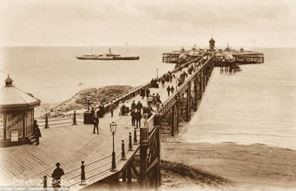
Margate Jetty
Trinity Church – The church is no longer there either, destroyed by bombs in WW2, which I find particularly poignant as The Blue Bench touches on the increasingly secular nature of Britain after WW1 – so I was very keen to include the church in the book as a very ‘real’ icon to represent one of the book’s themes.
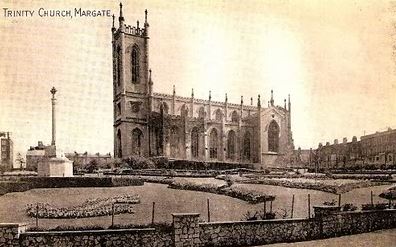
The picture below was particularly useful. It’s The Winter Gardens, one of the book’s most important locations and though the building is still there it has changed structurally with the central atrium now being covered – hence pictures like this were essential to allow me to describe it in 1920 and, more importantly, get a feel for its atmosphere.
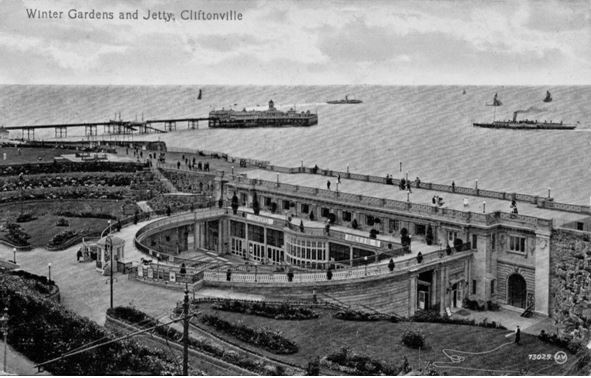
Because Margate is central to the book such pictures and maps were great resources and, I hope, helped me to bring it to life. I particularly like the above picture as it also shows the jetty with an approaching steamer – another reminder of the popularity of Margate back in the day.
Adverts: When it comes to detail I find adverts useful. Cigarettes, drinks, shops, chocolates, cars, – all may have fleeting references in the book and I wanted them to be real. Adverts are also useful to help with the cost of items and they are easy to find in online picture libraries. Occasionally I will look to somewhere like ebay to source actual copies of magazines and papers which will carry adverts and articles full of useful information helping me to ‘feel’ the atmosphere.
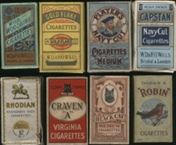
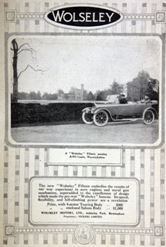
….and I could go on – I finished up with a ‘mood board’ of a hundred or more pictures to which I referred constantly for both detail and inspiration. But I’d like to leave you with just two more pictures: The first is of a ward at Sidcup hospital during WW1 – the hospital where the inspirational Major Gillies developed the techniques of facial reconstruction which broke new ground in surgery and gave many wounded veterans a reason to keep going after the war.

And the last one is … well, if you’ve had a chance to read the book then I guess it’s self-explanatory but if not, then maybe I’ll just leave things there … as a tease….

I really hope this article has been of interest with some insight into how I tried to make sure The Blue Bench was historically accurate. Oh, and by the way, all the photos reproduced here are in the public domain.
If there are any questions or comments I’d love to hear them.
Paul
Thanks so much for another fascinating article, Paul. I suspect your research was both a challenge and a pleasure. – Nicola

Paul has very kindly provided some fabulous prizes for me to offer in a giveaway. To enter, just click on each different way of entering in the Gleam entry box below.
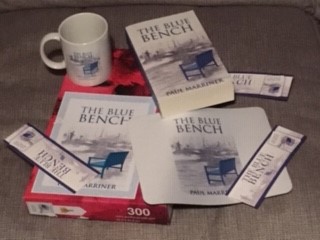

 Paul grew up in a west London suburb loving sport, music and, especially, literature. He writes full time and has published three novels. His ambition is to write books that entertain, engage and challenge and believes in the power of great stories and passionate, honest writing.
Paul grew up in a west London suburb loving sport, music and, especially, literature. He writes full time and has published three novels. His ambition is to write books that entertain, engage and challenge and believes in the power of great stories and passionate, honest writing.


Nicola, Thank you so much for hosting these articles. You’re spot on about the research being enjoyable and many hours were spent following links to stories within stories within stories. Often it wasn’t possible to include the research in the book itself but it always helped to feel the atmosphere and gain a sense of place and time.
If any readers have questions or comments I’d love to hear them.
Best wishes,
Paul
It’s been my pleasure, Paul.
Such an interesting book. Thank you!
Have just received my wonderful prize – thanks to Paul and Nicola for facilitating this. The Blue Bench was my personal Book of the Year for 2018 (I review Historical Fiction for Discovering Diamonds) and I found it refreshingly different from Tudors, Plantagenets etc etc! The content was exceptionally interesting and, as a former resident of Margate, I could not find any fault in the descriptions of the locations! Good luck with the book, Paul!
Great news, Richard. What a brilliant endorsement for the book.
Thank you, Nicola. I have been promoting the book whenever I can because it just knocked me out when I first received an e-version to review. I had not heard of Paul before and so I had no axe to grind. And now I have a signed Paperback copy!!
Excellent! Will you reread it?
Absolutely!!
Hope you enjoy it as much the second time around. It sounds like you will.